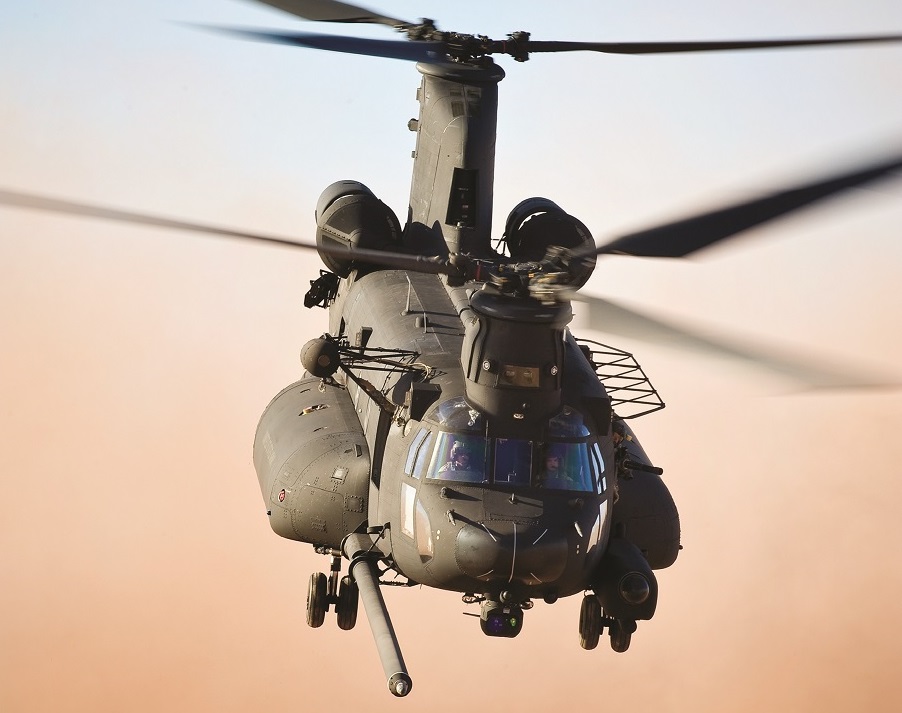A centerpiece technology of Boeing’s Block II upgrades for the U.S. Army’s CH-47F Chinook helicopter produces excessive vibration that poses a risk to crewmembers, the U.S. Army found during flight testing.
Experimental versions of the CH-47 Block II aircraft flew a total 387 developmental test hours in fiscal 2020, which ended Oct. 1. During that testing, the advanced Chinook rotor blade (ACRB) produced “excessive vibrations in various flight profiles across the Block II’s performance envelope,” according to the annual weapon systems report published in January by the U.S. Defense Department’s director of test and evaluation (DOT&E).

“The most recent ACRB design produces excessive vibrations in ground, hover, and forward flight that may cause a safety of flight risk,” the report said. “Aircrews reported prolonged fatigue and other physiological conditions due to excessive vibrations following a developmental test flight using the redesigned ACRBs.”
The Army’s heavylift program office is examining the issue and determining whether it will affect the program’s scheduled limited user test later this year.
Army aviation officials did not respond to detailed questions posed by Vertical two weeks ago. Boeing told Vertical there have been no issues during testing that risked the safety of aircraft or crews.
“The Block II aircraft continue to generate data for analysis and verification as part of developmental flight test,” a Boeing spokesperson said in an email. “We are working closely with the Army to address any issues, and there is not a safety of flight risk. We expect to test and validate further modifications as needed as developmental flight test continues.”
Block II is meant to be an overhaul and performance upgrade to the conventional Army’s CH-47F. Upgrades include a reduced-weight ballistic protection system, digital automatic flight control system, a beefed-up drivetrain, a lighter weight fuel system and an updated common avionics architecture.
Congress has repeatedly buoyed the Block II program against U.S. Army efforts to forego initial plans of upgrading 464 CH-47Fs to the advanced configuration.
Central to the Chinook Block II design is the ACRB, a drop-in composite replacement for existing fiberglass rotor blades that Boeing promised could deliver at least a 1,500-pound (680-kilogram) increase in lift. The ACRB, which has undergone multiple redesigns during developmental testing of the Block II package because “initial ARCB designs were stable but did not provide the power improvements predicted by computational models,” according to the DOT&E report.
The most recent iteration of the ACRB demonstrated a 2,300-lb. (1,040 kg) increase in lift at 95 degrees F (35 degrees C) and 4,000 feet (1,220 meters) pressure altitude, but that performance produced the offending vibrations, according to the DOT&E report.
Also highlighted in the report is a delay in the Chinook Block II live fire testing because of design changes required to “correct performance deficiencies, parts availability, and the availability of a specialized test facility.” The redesigned Block II fuel cell failed qualification testing and must be redesigned and rebuilt prior to future live fire evaluation of the fuel systems, the report said.
It is likely that live fire testing will have to be pushed back until after the Army decides whether to move ahead with manufacturing the Block II upgrade package for its F-model Chinook fleet.








